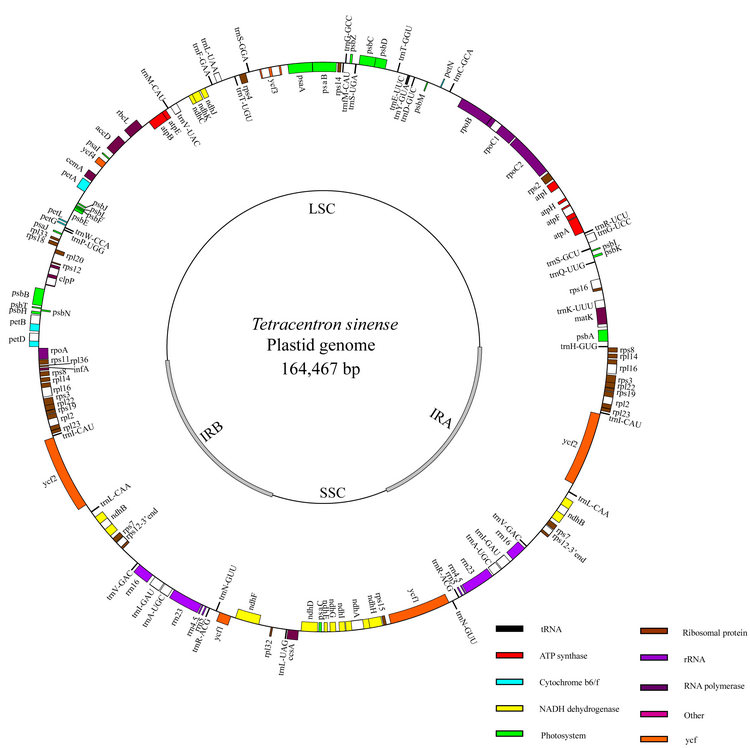Name:
Tell:
Email:
Organization:
Complete Plastid Genome Sequencing Makes Divergence Time between Two Trochodendraceae Extant Species Clear
2013-05-29
The early-diverging eudicot order Trochodendrales contains only two monospecific genera, Tetracentron and Trochodendron. Although an extensive fossil record indicates that the clade is perhaps 100 million years old and was widespread throughout the Northern Hemisphere during the Paleogene and Neogene, the two extant genera are both narrowly distributed in eastern Asia. Recent phylogenetic analyses strongly support a clade of Trochodendrales, Buxales, and Gunneridae (core eudicots), but complete plastome analyses do not resolve the relationships among these groups with strong support. However, plastid phylogenomic analyses have not included data for Tetracentron.
To better resolve relationships among basal eudicots and to clarify when the two extant genera of Trochodendrales diverged, PhD student SUN Yanxia from Key Laboratory of Plant Germplasm Enhancement and Specialty Agriculture, Wuhan Botanical Garden sequenced the complete plastid genome of Tetracentron sinense using illumina technology.
The Tetracentron and Trochodendron plastomes possessed the typical gene content and arrangement that characterized most angiosperm plastid genomes, but both genomes had the same unusual ~4 kb expansion of the inverted repeat region to include five genes (rpl22, rps3, rpl16, rpl14, and rps8) that were normally found in the large single-copy region. Maximum likelihood analyses of an 83-gene, 88 taxon angiosperm data set yielded an identical tree topology as previous plastid-based trees, and moderately supported the sister relationship between Buxaceae and Gunneridae. Molecular dating analyses suggested that Tetracentron and Trochodendron diverged between 44-30 million years ago, which was congruent with the fossil record of Trochodendrales and with previous estimates of the divergence time of these two taxa.
They also characterized 154 simple sequence repeat loci from the Tetracentron sinense and Trochodendron aralioides plastomes that will be useful in future studies of population genetic structure for these relict species, both of which are of conservation concern.
This research was supported by Knowledge Innovation Project of Chinese Academy of Sciences (KSCX2-EW-J-20), National Natural Science Foundation of China grant (31070191) and U.S. National Science Foundation grant (ER-0431266). Relevant results have been published in PLoS ONE entitled “Complete Plastid Genome Sequencing of Trochodendraceae Reveals a Significant Expansion of the Inverted Repeat and Suggests a Paleogene Divergence between the Two Extant Species”.
Article link: http://www.plosone.org/article/info%3Adoi%2F10.1371%2Fjournal.pone.0060429

Map of the Tetracentron sinense plastid genome(Image by SUN)